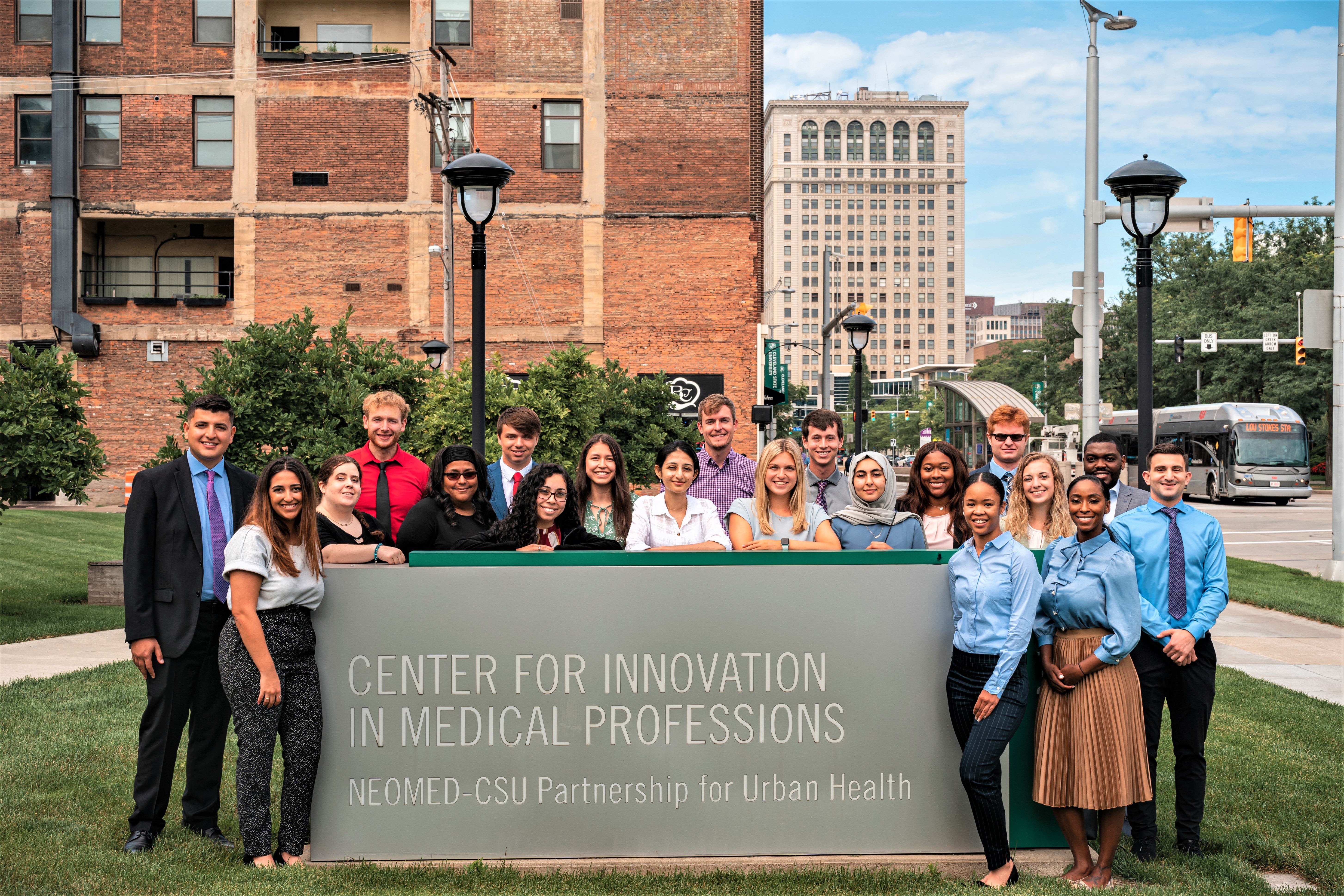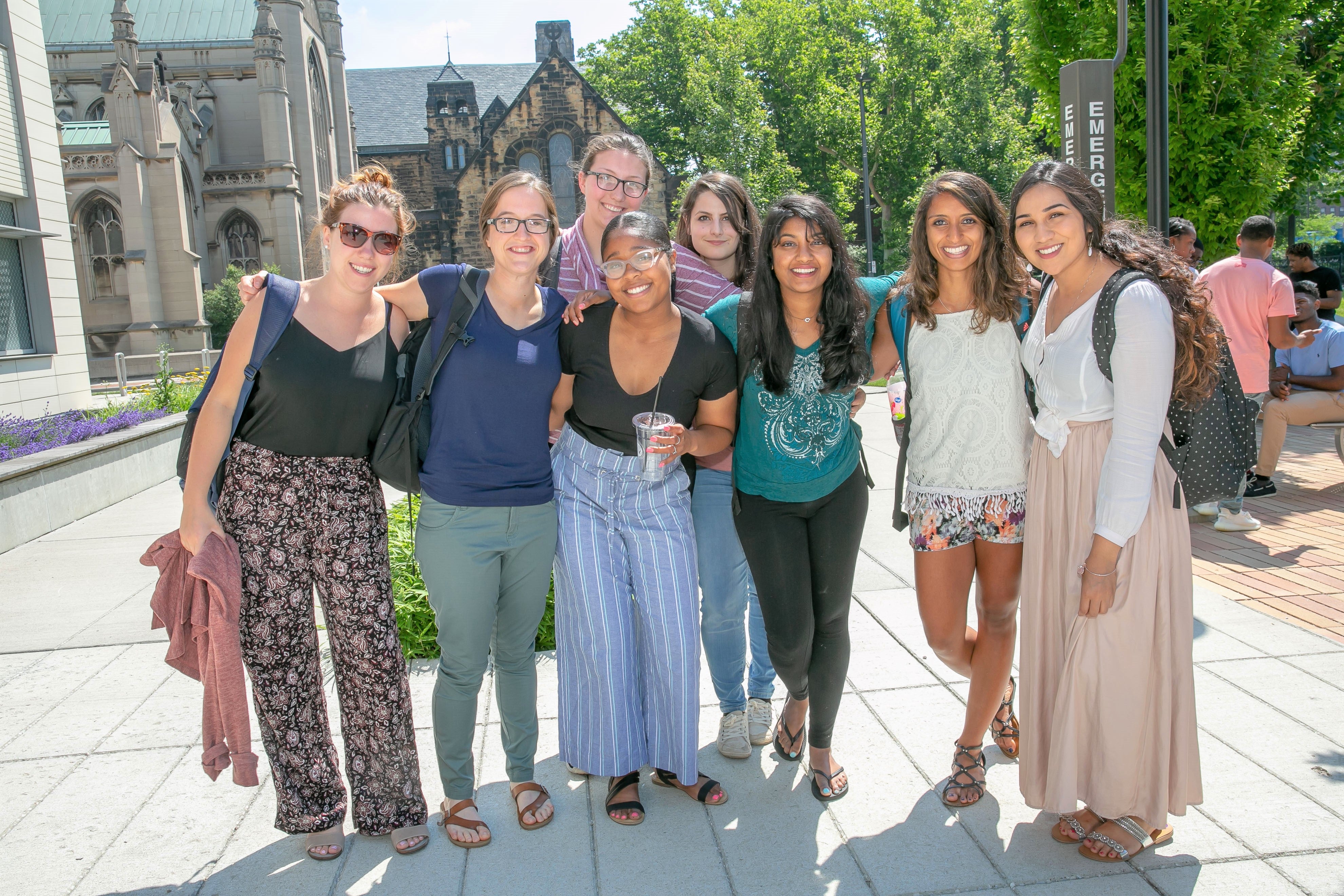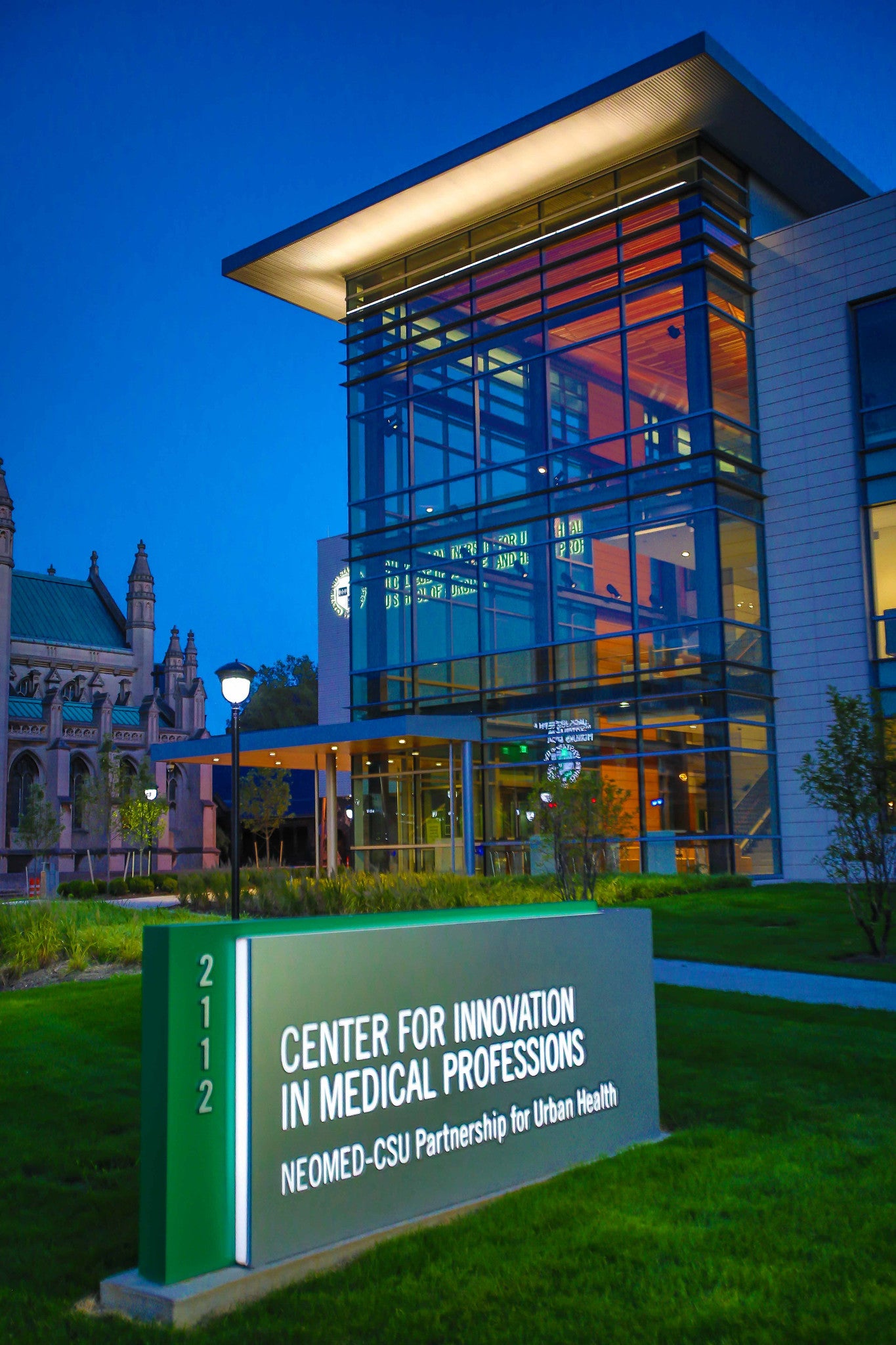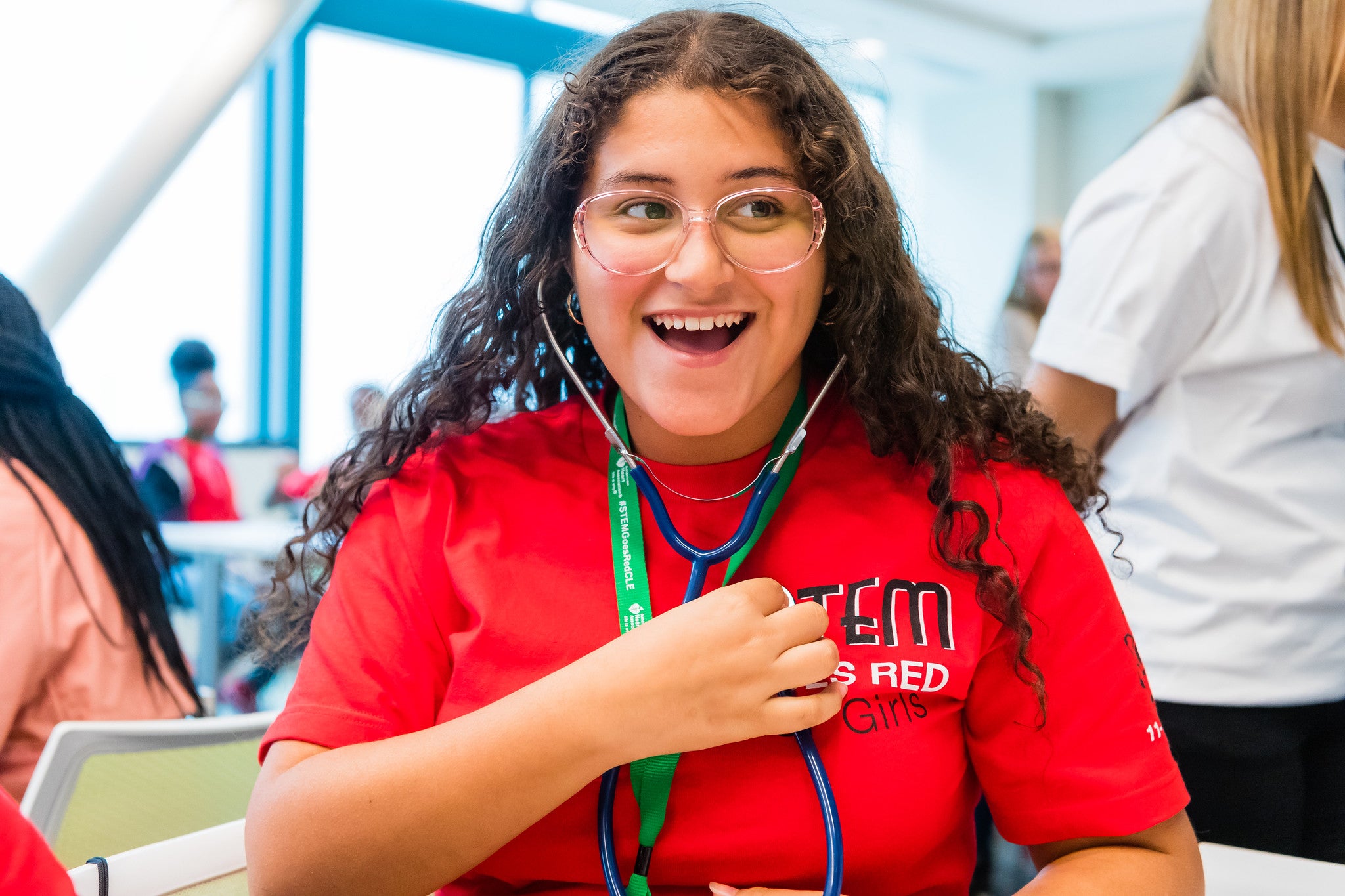Posted on December 7, 2021 at 4:14 PM, updated December 7, 2021 at 4:23 PM Print
 Program Pledges ‘Seats at the Table’ for Underrepresented Minority Students
Program Pledges ‘Seats at the Table’ for Underrepresented Minority Students
If you’ve always wanted to be a physician but second-guessed it as a goal, Cleveland State University’s Pathways to Practice Program provides four unique pathways to medical school for students who have a passion for medicine and for serving urban communities.
In partnership with Northeast Ohio Medical University (NEOMED), this soup-to-nuts program assists underrepresented minority students—those who identify as African American and/or Black, Hispanic/Latino, Native American, Pacific Islander and more—enroll to medical school.
Through the two-year program for undergraduate or post-baccalaureate students, Pathways to Practice prepares future health professionals to excel in all their med school endeavors. Students will have a seat in medical school guaranteed if they meet certain academic metrics—including a GPA of 3.4 in the sciences, and an MCAT score of 500.
 Once in the program, students complete medical school prerequisites while also participating in Urban Health certification, mentoring from physicians in the field, MCAT preparation, tutoring, one-on-one advising and a plethora of job shadowing opportunities.
Once in the program, students complete medical school prerequisites while also participating in Urban Health certification, mentoring from physicians in the field, MCAT preparation, tutoring, one-on-one advising and a plethora of job shadowing opportunities.
They’re also encouraged to utilize other CSU tutoring services and the College of Sciences and Health Professions Advising Center.
“The mission has always been to increase the number of underrepresented minorities practicing in medicine,” said Timothy McKnight, MD, MSHM, executive director of Pathways to Practice at CSU.
“We offer wraparound services and support to get the student through their pre-medical education and journey, but there are very exciting urban health components to this pathway as well—all woven into the urban health classroom—didactic, experiential learning opportunities,” said Dr. McKnight.
 First-Hand Experience as Inspiration and Driving Force
First-Hand Experience as Inspiration and Driving Force
Dr. McKnight is a second-generation physician, whose father graduated from medical school in 1945. As a young person, he would “accompany my father on house calls in the 1960s,” witnessing the elder McKnight practice in some of the toughest neighborhoods in Washington, DC.
He said that his two older siblings who are also doctors saw “up-close and personal all the healthcare disparities, and how folks in black and brown communities were struggling with daily life challenges,” as well as with their health.
“I grew up understanding the need to serve the underserved. Healthcare disparities were very apparent to me early on,” Dr. McKnight said. “What’s more, I transitioned from an urban DC public school to an Ivy League college—so, I understand how challenging this journey is. The need for support, guidance and counsel as you as you go through the pre-med journey is enormous.
“I never came close to having anything like this around when I was attending university,” Dr. McKnight added. “It was more like, ‘Here’s a pen, Tim! Good luck to you!’ And it was truly a sink or swim type of environment – a tough, tough journey.”
 Pathways to Practice may not be for the faint of heart, but the program and its mission have attracted some of the biggest hearts in the region—from leadership and faculty, to every individual student. McKnight, who recently assumed the leadership role, has an undeniable gravitational pull when talking about the program, underrepresented minorities in medicine, and the implications of a program like CSU’s for the future of the region.
Pathways to Practice may not be for the faint of heart, but the program and its mission have attracted some of the biggest hearts in the region—from leadership and faculty, to every individual student. McKnight, who recently assumed the leadership role, has an undeniable gravitational pull when talking about the program, underrepresented minorities in medicine, and the implications of a program like CSU’s for the future of the region.
“We must get it right. Not only are there health care disparities, but in terms of demographics, take African American physicians for example—we have been less than 10% of all practicing physicians for decades. It was a metric that has held true since my father practiced, and still holds true today,” he said.
“Our goal is to move that needle, even just a little bit.”
Patients often seek physicians in whom they see themselves, which adds a level of security and trust to the relationship. Dr. McKnight said that most certainly includes cultural background, race and ethnicity. The more security and trust, the more likely medical challenges will lessen in underserved populations.
He added that that while some grads come back to underserved communities to practice medicine, there’s “a long way to go” to shed the root causes of health disparity and “poor health outcomes.”
This includes everything from everyday life obstacles that patients face in underserved areas, to broader themes like diversity, equity and inclusion that address and eliminate implicit bias and systemic racism. Dr. McKnight and the Pathways to Practice team tackle these challenges, one future doctor at a time.
“Underserved populations are showing up sicker, with later-stage cancers, greater mobility challenges, higher mortality and morbidity rates, when compared to other communities,” Dr. McKnight said, alluding to the butterfly effect of all the connections impacted by the program.
 ‘Unique to the Country’
‘Unique to the Country’
There are an extremely limited number of programs like CSU’s Pathways to Practice Program in the United States—and none with access to the world-class care which Northeast Ohio boasts. Dr. McKnight said that is a a big part of what makes partnership with medical institutions so impactful and unique.
“We feel a very important component of learning is experiential, and Pathways to Practice often provides a lot of students with a their very first firsthand look at healthcare. Some of these students are first generation college students as well. They've never been in an office, a clinic or an ER or any type of healthcare setting, let alone with the likes of institutions that we are graced with,” Dr. McKnight said.
“It’s impactful and a way to develop a pipeline for underrepresented minority students to go through an institution like the Cleveland Clinic as a resident, and then perhaps practice in Northeast Ohio moving forward. To that end, CSU is continually looking to partner with other medical schools, like NEOMED, that have a similar mission,” Dr. McKnight said.
Pathways to Practice students have matriculated to NEOMED, as well as Ohio University Heritage College of Osteopathic Medicine, Case Western Reserve University School of Medicine, University of Toledo College of Medicine & Life Sciences, Wright State University and others.
For more information and eligibility requirements for the Pathways to Practice, visit https://sciences.csuohio.edu/neomed/pathways-practice.
 Looking Ahead
Looking Ahead
Beginning Fall 2022, high school seniors and incoming CSU freshmen can apply to the Pathways to Practice program. High school seniors must meet the following requirements:1) graduating from an Ohio high school; 2) considered an underrepresented minority or from a low-income household; 3) planning on attending CSU; and 4) interested in becoming a physician. Interested parties can learn more about the Fresh Pathway track at https://sciences.csuohio.edu/neomed/fresh-pathway.

